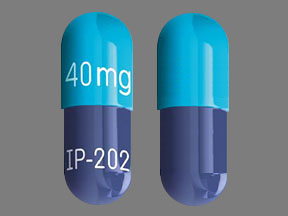Tivorbex Interactions
There are 429 drugs known to interact with Tivorbex (indomethacin), along with 11 disease interactions, and 2 alcohol/food interactions. Of the total drug interactions, 100 are major, 311 are moderate, and 18 are minor.
- View all 429 medications that may interact with Tivorbex
- View Tivorbex alcohol/food interactions (2)
- View Tivorbex disease interactions (11)
Most frequently checked interactions
View interaction reports for Tivorbex (indomethacin) and the medicines listed below.
- acetaminophen / hydrocodone
- albuterol / ipratropium
- alprazolam
- Ambien (zolpidem)
- azithromycin
- Benadryl (diphenhydramine)
- bupropion
- buspirone
- calcium / vitamin d
- cephalexin
- cetirizine
- clonazepam
- cyclobenzaprine
- Cymbalta (duloxetine)
- diclofenac
- dicyclomine
- doxycycline
- Fish Oil (omega-3 polyunsaturated fatty acids)
- Flonase (fluticasone nasal)
- fluticasone nasal
- folic acid
- gabapentin
- hydrochlorothiazide
- ibuprofen
- levothyroxine
- Lexapro (escitalopram)
- meloxicam
- omeprazole
- Singulair (montelukast)
- Vitamin D3 (cholecalciferol)
Tivorbex alcohol/food interactions
There are 2 alcohol/food interactions with Tivorbex (indomethacin).
Tivorbex disease interactions
There are 11 disease interactions with Tivorbex (indomethacin) which include:
- asthma
- fluid retention
- GI toxicity
- rash
- renal toxicities
- thrombosis
- CNS effects
- anemia
- hepatotoxicity
- hyperkalemia
- platelet aggregation inhibition
More about Tivorbex (indomethacin)
- Tivorbex consumer information
- Compare alternatives
- Reviews (1)
- Drug images
- Latest FDA alerts (6)
- Side effects
- Dosage information
- During pregnancy
- FDA approval history
- Drug class: Nonsteroidal anti-inflammatory drugs
- Breastfeeding
Related treatment guides
Drug Interaction Classification
| Highly clinically significant. Avoid combinations; the risk of the interaction outweighs the benefit. | |
| Moderately clinically significant. Usually avoid combinations; use it only under special circumstances. | |
| Minimally clinically significant. Minimize risk; assess risk and consider an alternative drug, take steps to circumvent the interaction risk and/or institute a monitoring plan. | |
| No interaction information available. |
See also:
Further information
Always consult your healthcare provider to ensure the information displayed on this page applies to your personal circumstances.


